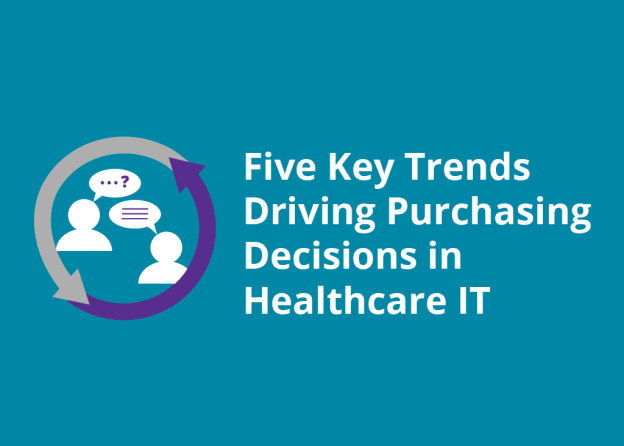As the healthcare industry continues to evolve and transform with providers facing increasing financial burdens and dynamic patient expectations, Signify Research has had the opportunity to speak to 100s of C-suite health IT executives and departmental decision-makers. Our conversations with these healthcare leaders have provided greater insight into their organizations’ technology and business strategies. It has also illuminated their views on the industry’s most pressing issues. Here are
Read More
How Hospitals Can Safely & Effectively Continue Patient Care Amid Rising Cybersecurity Risks
The world we live in is becoming increasingly integrated, and as it does, the amount of data also increases. It is estimated that 2.5 quintillion bytes – that’s 2,500,00,00,000 million, for perspective – are created, captured, and shared every day, and experts predict that number will grow exponentially in the coming years. Estimates show that the healthcare industry generates about 30% of the world’s data volume. That number is expected to reach a compound annual growth rate of 36% within the
Read More
3 Public Health Messaging Failures: What Went Wrong and How to Fix It
Public health crisis communications plans have the power to improve outcomes, reduce long-term healthcare costs, and save lives. These plans should convey crucial health information to impacted groups with recommendations on how and when to seek care and reduce spread. The consequences of ineffective, inconsistent, or absent public health messaging in times of crisis are grave, leading to the mistrust of healthcare institutions, stigmatization of impacted groups, and decreased likelihood of
Read More
Enabling a Better Future for All by Embracing Healthcare Interoperability
The Centers for Medicare and Medicaid Services (CMS) has laid the critical groundwork to create a connected healthcare system in which patients, providers, and payers can easily exchange information. This is thanks in part to the release of the Interoperability and Patient Access Final Rule. With new policies now in place, CMS aims to generate better health outcomes through improved interoperability and better access to health information for all stakeholders.
CMS has also identified a new
Read More
A Smarter Approach to Commercial Ecosystems for Superior HCP Experiences
The commercial life science industry continues to undergo a radical shift in the way it interacts with healthcare providers (HCPs) and consumers. In today’s complex, fast-paced market, traditional life science commercial models no longer cut it.
Fortunately, technology has advanced to enable the agile transition and optimization of customer engagement channels through automation and intelligence-driven workflows. Successful enterprises will leverage these technology advancements to
Read More
Improving The Digital Experience – for Both Patient and Employee
It’s a tired, old saw: Healthcare organizations are woefully behind when it comes to technology, automation and digital experiences.
Leaders are sick of hearing it. But that doesn’t make it any less true.
Current market pressures, however, compel hospitals, health systems and medical practices to reconsider their hesitancy in embracing these innovations. A combination of consumer demand and acute, unrelenting labor shortages force leaders to explore the practicality of leveraging
Read More
Is Education is the Catalyst to Increased Adoption of Handheld Ultrasound?
Handheld ultrasound has not yet reached mainstream adoption but the market is still forecast to reach over $500 million by 2026. Signify Research’s newly published Handheld Ultrasound Deep Dive Report 2022 shows that market revenues are estimated to have grown by approximately 30% in 2021, driven by strong growth in the US, the biggest market for handheld ultrasound. Despite the global challenges for handheld ultrasound vendors in 2022, such as rising inflation and supply chain disruptions, the
Read More
How Home Health Tech Can Solve a Stubborn $290B Healthcare Challenge
The good news on the medical front is that with advances in therapy, people with chronic diseases are able to remain in their homes and even live active lifestyles, which improves their quality of life and can save them, the government (Medicaid/Medicaid), and the insurance industry money. But -- and it’s a big one -- those savings can only be achieved if those patients adhere to their medication schedules.
Non-adherence first came to the forefront of awareness back in 2009, when the New
Read More
Technology’s Role in the Development & Improvement of Drug Diversion Auditing Processes
Drug diversion is an increasingly serious issue that tends to be substantially underestimated. In every instance, a potential threat to patient safety is present. This includes the risk of inadequate pain relief, exposure to infectious diseases through contaminated needles or drugs, and risks associated with unsafe care from impaired healthcare workers. Drug diversion can also pose risks to staff safety and regulatory compliance, as can be seen across all types of healthcare facilities and,
Read More
The Market Demand for Data-Driven Tech Solutions in Healthcare
The market demand for data-driven technology solutions in healthcare is on the rise. Today, one-third of the world's data is generated by the healthcare industry. This data is often complex and is coming from multiple different sources such as personal health information, claims data, clinical trial data, patient surveys, disease registries, population health statistics, wellness apps, and wearable devices. And so, the need for data management technologies continues to grow. In the Future Health
Read More











